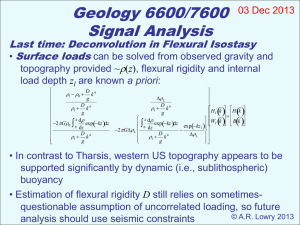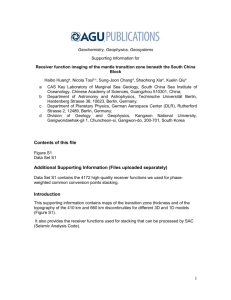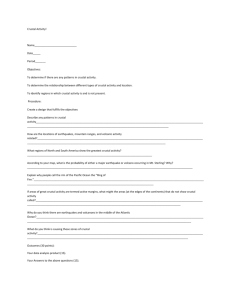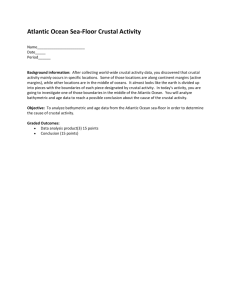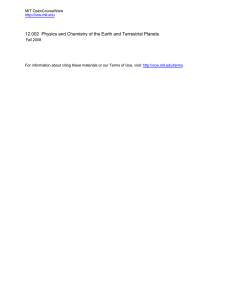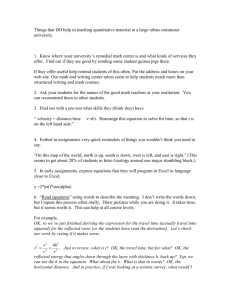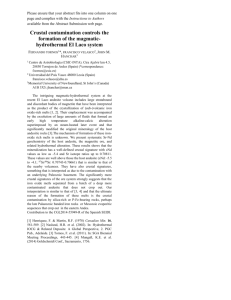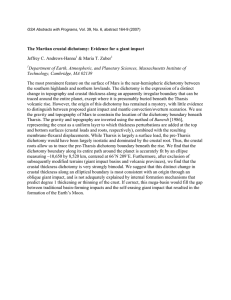10526_TRAN
advertisement
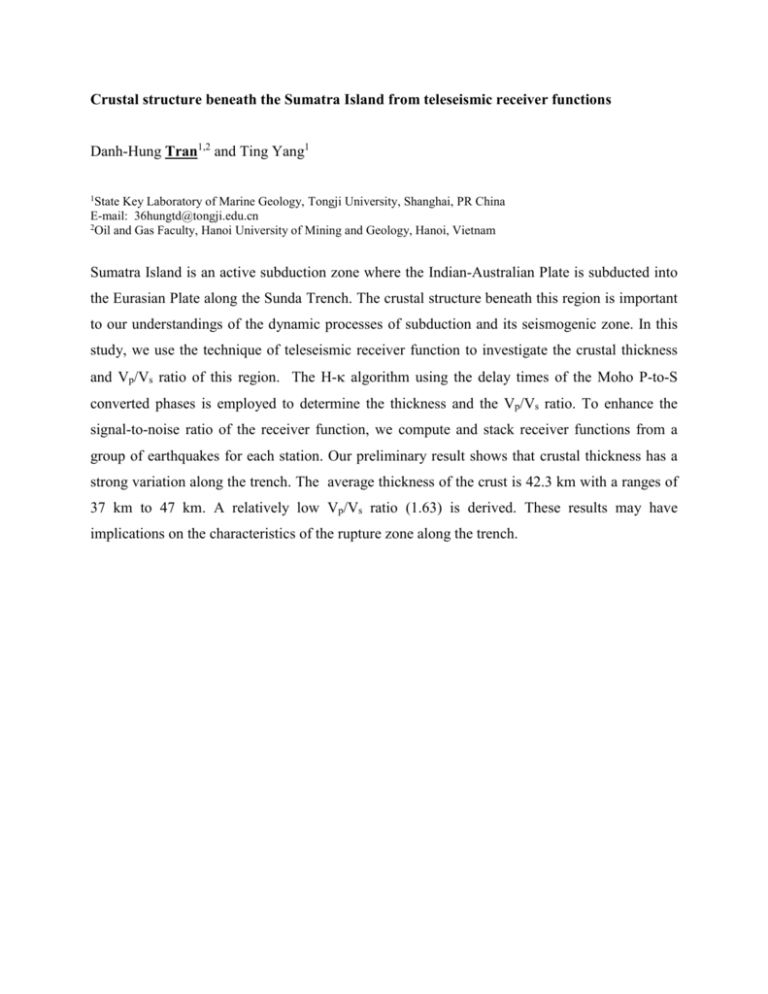
Crustal structure beneath the Sumatra Island from teleseismic receiver functions Danh-Hung Tran1,2 and Ting Yang1 1 State Key Laboratory of Marine Geology, Tongji University, Shanghai, PR China E-mail: 36hungtd@tongji.edu.cn 2 Oil and Gas Faculty, Hanoi University of Mining and Geology, Hanoi, Vietnam Sumatra Island is an active subduction zone where the Indian-Australian Plate is subducted into the Eurasian Plate along the Sunda Trench. The crustal structure beneath this region is important to our understandings of the dynamic processes of subduction and its seismogenic zone. In this study, we use the technique of teleseismic receiver function to investigate the crustal thickness and Vp/Vs ratio of this region. The H- algorithm using the delay times of the Moho P-to-S converted phases is employed to determine the thickness and the Vp/Vs ratio. To enhance the signal-to-noise ratio of the receiver function, we compute and stack receiver functions from a group of earthquakes for each station. Our preliminary result shows that crustal thickness has a strong variation along the trench. The average thickness of the crust is 42.3 km with a ranges of 37 km to 47 km. A relatively low Vp/Vs ratio (1.63) is derived. These results may have implications on the characteristics of the rupture zone along the trench.
